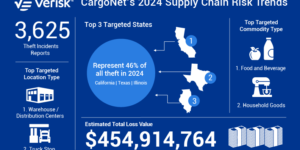Companies that allow remote work have experienced revenue growth that’s four times faster than those that are more stringent about office attendance, a new survey shows, adding fuel to the debate over productivity and performance in today’s workplaces.
The analysis of 554 public companies that employ a collective 26.7 million people found that “fully flexible” firms — which are either completely remote or allow employees to choose when they come to an office — increased sales 21 percent between 2020 and 2022, on an industry-adjusted basis. That compares with 5 percent growth for companies with hybrid or fully onsite workforces. The study, by flex-work advisor Scoop Technologies Inc. and Boston Consulting Group, included companies across 20 sectors, from technology to insurance. Revenue growth was normalized against average industry growth rates so that employers in better-performing areas would not skew the findings.
Among the companies that did require at least some office attendance, those that came in a few days a week boosted sales at twice the rate of those in the office full-time, according to the survey. The better growth rates for more remote-friendly companies could be due to their ability to hire faster and from a wider geographic area, along with higher employee retention, according to Scoop’s co-founder and CEO, Rob Sadow. At insurer Allstate Corp., for example, 84 percent of its new U.S. hires over the past year don’t live near one of its local offices, and remote-friendly jobs receive twice as many applications, according to Lauren DeYoung, who works across departments to oversee the company’s flexible-work arrangements.
“This starts to be a more compelling case for CFOs and CEOs to not be five days in the office,” Sadow said. “People ask if revenue growth is the best proxy — you could also look at shareholder returns. There is no perfect answer, but we felt this was a first step in the right direction.”
The survey is one of the first broad-based looks at how different work arrangements impact corporate performance. To date, most research comparing remote and office workers has been narrow in scope, looking at, say, data-entry workers in India or call-center workers in China. Business leaders at companies such as Amazon.com Inc. and JPMorgan Chase & Co., meanwhile, rarely cite financial data when imploring — or demanding — that workers return to their desks, arguing instead that on-site work bolsters collaboration and culture. Of the 5,565 companies in Scoop’s database, the share that require full-time in-office work has declined to 38 percent as of October from 49 percent at the start of the year.
Return-to-office advocates have some fresh data to bolster their position, though. A separate survey of 4,505 full-time U.S. employees from workplace consultant Mercer found that those who were in the office four days a week reported the highest levels of motivation and belonging. They were also most likely to recommend their company as a good employer and felt most strongly that their career goals could be met. A similar Mercer survey last year, however, found that those working just one day on site were the most engaged.
Mercer senior principal Lauren Mason said the results from her firm’s latest study surprised her and could be due to remote employees feeling marginalized inside their organization even if they are satisfied with their work arrangement. “That’s one theory we have,” she said, adding that those sentiments are often more prevalent among women, who engage in flex-work at higher rates than men. “And it’s not a good thing.”
Among companies that require a certain number of days in the office, just 6 percent require four days in, with most requiring two or three, the Scoop-BCG survey found. Previous research from Harvard Business School associate professor Prithwiraj Choudhury found that just one or two days in the office is the ideal setup for hybrid work, as it provides workers with the flexibility they crave without the isolation of going fully remote.
A good practice, according to workplace experts, is to provide individual teams with some autonomy on when and where they work, rather than the CEO mandating a firm-wide attendance policy that rarely works for everyone. Teams that set their hybrid policy together have the highest employee engagement, according to Gallup.
“I’m talking to more companies these days that have weakly enforced hybrid guidelines but haven’t come out with a policy yet,” said Debbie Lovich, a BCG senior partner who leads the consulting firm’s workplace efforts. “They are looking for data to figure out what to do.”























 As Life Shifts Gears, Insurance CEO Chases Racing Dream
As Life Shifts Gears, Insurance CEO Chases Racing Dream  Moody’s RMS Adds to LA Fires Insured Loss Estimates With Range of $20B-$30B
Moody’s RMS Adds to LA Fires Insured Loss Estimates With Range of $20B-$30B  Study Shows Some Buildings Along Miami Coastline Are Sinking
Study Shows Some Buildings Along Miami Coastline Are Sinking  Property/Casualty Insurance in the Era of Rising Complexity
Property/Casualty Insurance in the Era of Rising Complexity 